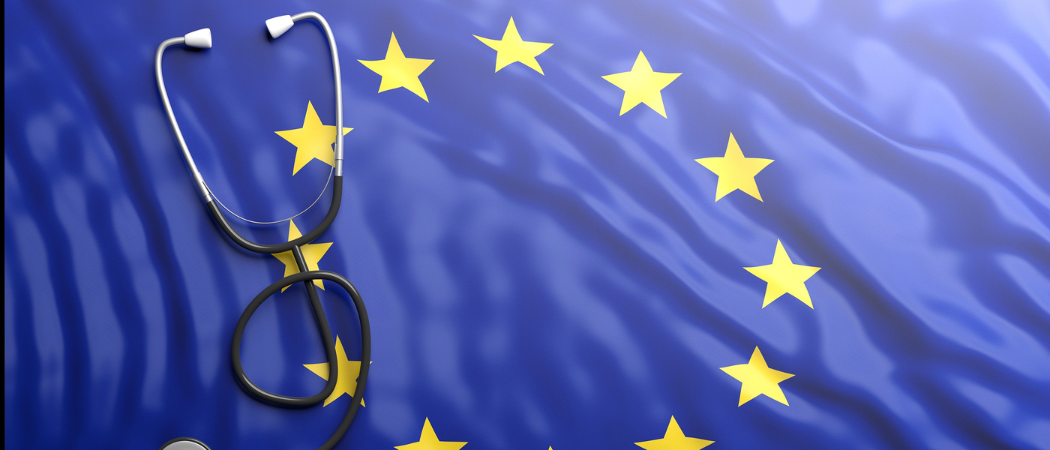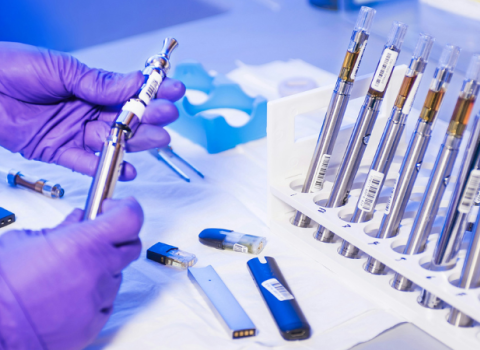The EU’s public-private partnerships for health research are looking to align their activities more closely, but joint calls are unlikely

Photo credits: Rawf8 / BigStoch
More coordination is needed between the EU’s public-private partnerships and with other instruments in order to translate investment in health research into improved outcomes for patients, representatives of the programmes said on Tuesday.
The European Commission has been pushing to increase synergies between instruments, and in the case of health, the Commission itself has made progress through increasing cooperation across its directorates general, said Carmen Laplaza Santos, head of unit for health innovation in the research directorate.
“The proof is that when we talk about the ecosystem of the partnerships, we also include the joint actions, for example funding by EU4Health, or the projects funded by the Digital Europe Programme,” she told delegates at the ‘Towards Healthcare of the Future’ conference in Brussels this week.
The mechanics of how to reduce duplication and deliver synergies is ever more critical as a range of technologies, such as biotechnology, nanotechnology, engineering, digitalisation and big data converge on, and transform, healthcare.
As one example, the €5 billion EU4Health programme has the broad brush objective of making Europe’s healthcare systems stronger, healthier and more resilient, a brief that encompasses everything from pandemic preparedness to drug manufacturing.
“It doesn’t make sense that we spend a lot of effort in funding research and innovation, and afterwards, the same actor, the European Commission, does not build on those efforts in order to further implement,” Laplaza Santos said.
There are nine Horizon Europe health partnerships covering topics from rare diseases to global health. More could be done to ensure their activities are complementary, but that burden shouldn’t fall on the partnerships. Rather, it is up to the Commission to identify the best instrument to tackle specific needs, Laplaza Santos said.
But ensuring each partnership picks the right moment to bring move research results closer to application is “very difficult”, and the Commission is still considering the best way to coordinate this.
Alignment is vital, because when implementing new technologies in healthcare systems, the different initiatives will face common challenges related to patient trust, data protection and skills, Laplaza Santos added.
Joint calls
While the partnerships are ready to play their part, this will not go as far as launching joint calls any time soon.
“There are so many organisations back home in our countries, and aligning those is already quite an effort. Combining different partnerships might be overwhelming,” said Gerda Geyer, who leads a work package on strengthening ecosystems in the Transforming Health and Care Systems (THCS) partnership.
Instead, she suggested the partnerships could focus on different parts of the innovation cycle, with one managing a call for basic research, while another handles implementation. For example, products developed by the European Partnership for Personalised Medicine (EP PerMed) could be suited to THCS calls for validation and evaluation.
Capacity building, information sharing, training and workshops on specific topics would also be more realistic avenues for collaboration. THCS has established a network of ambassadors via which it brings partnerships together to report on their activities, Geyer said.
The ERA4Health partnership, which organises cross-national joint programming in research relating to public health, has set up a working group to identify potential synergies with other EU partnerships and initiatives. “It’s important to avoid covering the same things in our different calls,” said ERA4Health coordinator María Cristina Nieto García. She also noted that joint calls across partnerships would be difficult to implement.
Each of the partnerships has a strategic research and innovation agenda (SRIA) which is periodically updated to reflect new research priorities, and these can also provide opportunities to share knowledge, said Wolfgang Ballensiefen, coordinator of EP PerMed “We can definitely use the update of all of our SRIAs to support each other,” he said, adding EP PerMed consulted members of other partnerships when it was drawing up its SRIA.
Ballensiefen said he was happy to see personalised medicine mentioned in calls from the THCS and Innovative Health Initiative partnerships, and suggested EP PerMed could “maybe even do something together” with ERA4Health, which is planning future calls for multinational clinical trials.





 A unique international forum for public research organisations and companies to connect their external engagement with strategic interests around their R&D system.
A unique international forum for public research organisations and companies to connect their external engagement with strategic interests around their R&D system.